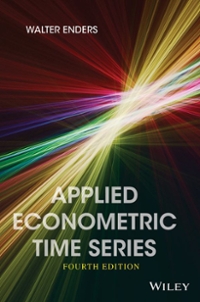Question
Agents: Let = 2 and = 1/2 so that agents, characterized by their type { L , H } , have a utility function given
Agents: Let = 2 and = 1/2 so that agents, characterized by their type {L , H} , have a utility function given by (, ; , , ) = 2 + + ( + ) (, ),
where is the fixed wage and the bonus rate and where the cost of effort is
(, ) = 1/2 (2 + 2 + ).
Firms: Assume that = 2 and = 4 so that the profits they get from contracting an agent is given by
(, , ) = 2 + (4 )( + ) .
Setting 2: Consider that several employers are competing for agents. Each employer offers contract (zH, yH) to type H and contract (L , L) to type L . Upon receiving this contract and accepting it, the agent chooses the effort levels and . (Note that in such a context the reservation utility is irrelevant.)
a) Using equalities (H, yH, zH) = 0 <-> (yH) + (b- yH)H = zH; and (L, yL, zL) = 0 <-> (yL) + (b - yL)L = zL; find the contract that would be offered to each type when types are verifiable, and when each employer can perfectly anticipate the efforts exerted by the contracted agent.
b) Explain what will happen if the employers propose the symmetric information contracts when they cannot verify the type. In this case, how must the bonus payments be modified, if at all, to address the incentive compatibility issues?
c) Explain, in a few lines, what are the main conclusions one can draw from this analysis in terms of large bonuses being paid in some sectors of the economy. Show that you understand how contracts are modified to address the asymmetry of information when there is competition and where there is a monopolistic employer.
Step by Step Solution
There are 3 Steps involved in it
Step: 1

Get Instant Access to Expert-Tailored Solutions
See step-by-step solutions with expert insights and AI powered tools for academic success
Step: 2

Step: 3

Ace Your Homework with AI
Get the answers you need in no time with our AI-driven, step-by-step assistance
Get Started


